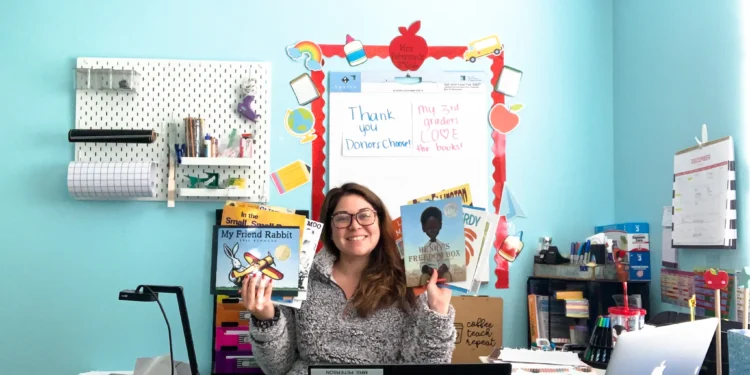The shift to remote education has revolutionized the way teachers interact with students, bringing both challenges and exciting opportunities for growth. Remote learning requires a different approach to teaching, one that is deeply reliant on technology and the ability to adapt to ever-evolving digital tools. Whether you’re new to remote education or you’re a seasoned educator looking to enhance your teaching toolkit, having the right tools can make a world of difference.
In this article, we will explore 100+ must-have tools for remote educators that can enhance your teaching experience, streamline administrative tasks, boost student engagement, and foster a productive and enjoyable virtual classroom environment. From communication platforms and project management tools to assessment and collaboration apps, this guide will provide you with a wide variety of options. Each tool is designed to help you maximize efficiency and effectiveness in the remote learning space.

Communication and Collaboration Tools for Remote Educators
At the heart of remote education lies communication—clear, consistent, and engaging communication with students, parents, and colleagues. Remote educators rely heavily on digital communication platforms to manage lessons, share information, and foster collaboration among students. In this first group, we focus on tools that facilitate communication and collaboration, ensuring that educators can maintain strong connections with their students despite being physically distant.
Whether you’re hosting live lessons, offering real-time feedback, or organizing group projects, these tools will help you communicate with students in a way that’s both engaging and effective.
1. Zoom
Explanation: Zoom is one of the most widely used video conferencing tools, offering features like virtual classrooms, breakout rooms, screen sharing, and recording capabilities. It’s perfect for hosting live lessons, webinars, and virtual office hours, allowing educators to engage with students in real-time.
2. Microsoft Teams
Explanation: As a collaboration hub, Microsoft Teams integrates well with Office 365 and other Microsoft apps. Teams offers chat, file sharing, and meeting features that are crucial for keeping students organized and engaged, while also allowing for direct communication through instant messaging.
3. Google Meet
Explanation: A popular choice for educators who rely on Google Classroom and other Google Workspace tools. Google Meet integrates seamlessly with Google Docs, Sheets, and Slides, making it an excellent choice for sharing and collaborating on documents during virtual lessons.
4. Slack
Explanation: Slack offers organized channels for communication, direct messaging, and file sharing. It’s especially useful for facilitating communication in group projects, teacher teams, or any situation where different groups of students or colleagues need to collaborate efficiently.
5. Trello
Explanation: Trello is a project management tool that allows educators to organize tasks, projects, and timelines visually using boards, lists, and cards. This is an excellent tool for creating lesson plans, tracking student progress, or organizing group projects.
6. Discord
Explanation: Originally designed for gaming communities, Discord has become popular in education for creating virtual classrooms and student communities. It allows for voice, video, and text chat, and its channels can be used for various subjects or activities, making it ideal for fostering engagement.
7. Skype
Explanation: Skype is a reliable platform for one-on-one tutoring sessions or small group calls. With features like video calling, screen sharing, and file sharing, Skype offers a simple yet effective way to maintain communication with students.
8. Padlet
Explanation: Padlet is a digital bulletin board that allows students and teachers to collaborate by adding notes, images, links, and videos. It can be used for brainstorming, collecting feedback, or sharing resources in an interactive and visually engaging way.
9. Remind
Explanation: Remind is a communication tool designed specifically for educators to send messages to students and parents via text, email, or app notifications. It’s great for keeping everyone informed about class updates, assignments, and reminders in a secure environment.
10. Flipgrid
Explanation: Flipgrid is a video discussion platform that allows educators to post discussion topics or questions, to which students can respond via short video clips. This is a fantastic way to encourage student engagement and give them a voice in the classroom, even in a remote environment.

Content Creation and Presentation Tools for Remote Educators
Creating visually appealing, interactive, and easily digestible content is essential in keeping students engaged and ensuring that the material is accessible. Whether you’re delivering lessons, creating assignments, or developing quizzes, the right content creation tools can significantly enhance your teaching and presentation. These tools will help educators transform their ideas into dynamic learning experiences.
11. Canva
Explanation: Canva is a versatile graphic design tool that allows educators to create stunning presentations, infographics, worksheets, and social media posts. It comes with a variety of templates, making it easy to design eye-catching educational materials, even if you don’t have a design background.
12. Prezi
Explanation: Prezi is a cloud-based presentation tool that offers a more dynamic alternative to traditional slideshows. With its zoomable canvas, Prezi allows educators to create interactive, visually engaging presentations that keep students’ attention.
13. Google Slides
Explanation: Google Slides is part of the Google Workspace suite and allows educators to create and collaborate on presentations in real-time. With its easy-to-use interface, it’s an excellent tool for creating interactive lessons and sharing slides with students instantly.
14. Screencast-O-Matic
Explanation: A user-friendly screen recording tool, Screencast-O-Matic allows educators to record their screen, webcam, and audio to create tutorials, explanations, or lecture videos. It’s perfect for creating video lessons, demonstrations, or recorded feedback for students.
15. Loom
Explanation: Loom is another screen recording tool that offers seamless video creation and sharing. It’s perfect for educators who want to create instructional videos, explain complex concepts, or provide personalized feedback to students.
16. Adobe Spark
Explanation: Adobe Spark allows educators to create engaging visual content, including videos, web pages, and graphics. With its easy-to-use design tools, educators can bring their ideas to life quickly, making lessons more engaging through creative storytelling.
17. ThingLink
Explanation: ThingLink is an interactive image and video tool that allows educators to embed links, audio, and other multimedia elements directly into images or videos. This is a great tool for creating interactive content such as infographics, virtual tours, or immersive learning experiences.
18. Nearpod
Explanation: Nearpod is an interactive presentation and lesson tool that enables educators to incorporate quizzes, polls, videos, and simulations into their lessons. It also allows for real-time interaction, making it ideal for keeping students engaged during live lessons.
19. Kahoot!
Explanation: Kahoot! is a game-based learning platform that allows educators to create quizzes and interactive games. It’s a fun and competitive way to review material and engage students, making learning more interactive and enjoyable.
20. Educreations
Explanation: Educreations is an interactive whiteboard tool that allows educators to create video lessons, explanations, and tutorials with handwritten notes, drawings, and voiceovers. It’s a great tool for explaining complex concepts and creating personalized lessons.

Assessment and Feedback Tools for Remote Educators
When teaching remotely, it’s essential to have tools that can help assess student learning, provide instant feedback, and track progress. These tools will help educators create quizzes, assignments, and assessments that are easy to manage and grade. Whether you’re conducting a formative quiz or providing detailed feedback on essays, these tools make the assessment process more efficient and effective.
21. Google Forms
Explanation: Google Forms is a versatile tool for creating quizzes, surveys, and assignments. It automatically grades multiple-choice questions, tracks responses, and allows for easy analysis of student performance. It integrates well with Google Classroom, making it a great choice for remote assessments.
22. Quizizz
Explanation: Quizizz is a game-based learning platform where educators can create quizzes, polls, and interactive activities. It provides instant feedback to students, making learning fun and motivating. It’s perfect for formative assessments and review sessions.
23. Edmodo
Explanation: Edmodo is a comprehensive platform for managing classrooms, assignments, and assessments. Teachers can create quizzes, assign homework, provide feedback, and track student progress—all in one place. It also allows for communication with students and parents.
24. GradeScope
Explanation: GradeScope is an assessment tool designed for grading exams, assignments, and projects. It uses AI to help educators grade more efficiently and provides detailed analytics on student performance. It’s ideal for multiple-choice, short-answer, and essay-based assessments.
25. Formative
Explanation: Formative is an assessment platform that allows educators to create real-time assignments, quizzes, and assessments. It includes tools for tracking student responses, providing immediate feedback, and adjusting lessons based on student performance.
26. Flipgrid (for feedback)
Explanation: Flipgrid isn’t just for discussions—it’s also great for giving personalized feedback to students. Educators can record video comments on assignments or responses, providing a more engaging and personal form of feedback.
27. Turnitin
Explanation: Turnitin is a plagiarism detection tool that helps educators check the originality of student submissions. It’s an essential tool for ensuring academic integrity in remote education while providing feedback on writing assignments.
28. Poll Everywhere
Explanation: Poll Everywhere allows educators to create live polls, quizzes, and surveys that students can respond to in real-time. It’s perfect for quick formative assessments during live lessons, gauging student understanding instantly.
29. Socrative
Explanation: Socrative is a real-time quiz and assessment tool that allows educators to create multiple-choice, true/false, and short-answer questions. It provides instant results and detailed analytics on student performance, making it easy to assess and adjust lessons accordingly.
30. Moodle
Explanation: Moodle is a learning management system (LMS) that allows educators to create quizzes, assignments, and assessments. It offers powerful tools for tracking student progress, grading assignments, and providing feedback, making it ideal for remote and blended learning environments.

Organization and Productivity Tools for Remote Educators
Staying organized is essential for remote educators, especially when managing multiple classes, assignments, and communications. In this section, we’ll focus on tools that help remote educators stay productive, organized, and efficient in their day-to-day operations.
31. Google Calendar
Explanation: Google Calendar is a powerful scheduling tool that helps educators keep track of lesson plans, deadlines, meetings, and events. It integrates seamlessly with Google Classroom and other Google Workspace tools, making it a great choice for time management.
32. Notion
Explanation: Notion is an all-in-one workspace that combines notes, tasks, databases, and calendars. It’s perfect for educators who need to stay organized and manage their content, lesson plans, and student information in one place.
33. Trello
Explanation: Trello is a visual project management tool that allows educators to create boards for different tasks, assignments, or projects. It’s perfect for organizing lessons, tracking student progress, and collaborating with colleagues.
34. Evernote
Explanation: Evernote is a note-taking tool that helps educators store and organize lesson plans, research, and student notes. It’s a great tool for keeping all your teaching resources in one place, making them easy to access and organize.
35. Asana
Explanation: Asana is a project management tool that helps educators manage tasks, set deadlines, and track progress. It’s a great tool for organizing assignments, grading, and keeping track of your overall workload.
36. ClickUp
Explanation: ClickUp is another project management and organization tool that allows educators to track tasks, goals, and deadlines. It’s highly customizable, so you can tailor it to fit your needs as an educator.
37. Microsoft OneNote
Explanation: OneNote is a powerful note-taking tool that integrates with Microsoft Office. It’s perfect for educators who want to create digital notebooks for different subjects or lesson plans, with the ability to collaborate and share resources.
38. Slack
Explanation: Slack is a messaging and collaboration tool that’s ideal for managing communication among remote educators, students, and teams. It helps streamline conversations, share files, and organize discussions around topics, assignments, and projects.
39. Google Keep
Explanation: Google Keep is a simple note-taking and organization tool that allows you to create quick notes, checklists, and reminders. It’s great for jotting down ideas, creating to-do lists, and keeping track of small tasks in your day.
40. Dropbox
Explanation: Dropbox is a cloud-based storage tool that allows educators to store, share, and organize files and resources. It’s perfect for keeping lesson plans, teaching materials, and student submissions accessible from anywhere.

Virtual Labs, Simulations, and Learning Games for Remote Educators
Interactive learning is one of the most powerful ways to engage students, especially in a remote setting. Virtual labs and simulations allow students to apply their theoretical knowledge in a controlled, interactive environment. These tools also foster critical thinking and problem-solving skills in a way that traditional methods may not. Learning games, on the other hand, make education fun and help reinforce knowledge through play, keeping students motivated and engaged.
41. PhET Interactive Simulations
Explanation: PhET offers a wide variety of interactive science simulations that cover topics like physics, chemistry, biology, and math. These simulations allow students to experiment and explore complex scientific concepts in an engaging and interactive way.
42. Labster
Explanation: Labster provides virtual labs in science subjects, offering simulations that allow students to conduct experiments in a digital environment. It’s perfect for science educators looking to bring the hands-on experience to remote learners.
43. Kahoot!
Explanation: Kahoot! is a game-based learning platform that turns quizzes into fun, competitive games. Teachers can create quizzes on various subjects, and students participate in real-time to answer questions. It’s ideal for review sessions and formative assessments.
44. Quizlet
Explanation: Quizlet allows educators to create flashcards, quizzes, and games to help students study and memorize key concepts. It’s an excellent tool for reinforcing knowledge through active recall and spaced repetition techniques.
45. Gimkit
Explanation: Gimkit is a game-based learning platform that lets students earn points by answering questions correctly. The platform’s unique twist is that students can buy upgrades during the game, which encourages them to keep playing and learning.
46. Minecraft Education Edition
Explanation: Minecraft Education Edition brings the creativity and problem-solving of Minecraft to the classroom. Teachers can use it to create interactive lessons where students can build structures, explore virtual worlds, and learn subjects like history, math, and science in an immersive way.
47. Tinkercad
Explanation: Tinkercad is a 3D design and modeling tool that allows students to create and explore virtual models. It’s perfect for teaching concepts in engineering, architecture, and design, making abstract concepts tangible and interactive.
48. SimCityEDU
Explanation: SimCityEDU is an educational version of the popular SimCity game. It allows students to play as city planners, making decisions about urban development while learning important concepts in economics, geography, and environmental science.
49. Scratch
Explanation: Scratch is a coding platform that allows students to create their own interactive stories, games, and animations. It teaches students the basics of programming in a fun, hands-on way that’s perfect for younger learners.
50. ExploreLearning Gizmos
Explanation: Gizmos offers over 400 interactive math and science simulations that help students visualize and interact with complex concepts. It’s a great tool for helping students develop a deeper understanding of mathematical and scientific principles through hands-on exploration.

Student Engagement and Motivation Tools for Remote Educators
Keeping students motivated and engaged in a remote environment can be challenging, but with the right tools, it becomes easier. This group focuses on tools that help increase student participation, encourage active learning, and make the learning process more fun and engaging. These tools can assist in building a sense of community, fostering collaboration, and maintaining student interest.
51. Padlet
Explanation: Padlet allows educators to create interactive boards where students can post text, images, and links. It’s great for collaborative projects, brainstorming sessions, and creating a virtual bulletin board for sharing ideas and resources.
52. Nearpod
Explanation: Nearpod combines interactive lessons with real-time assessment tools. Educators can use it to create engaging lessons that include quizzes, polls, and multimedia content, while tracking student progress during live sessions.
53. Seesaw
Explanation: Seesaw is a student-driven digital portfolio that allows students to document their learning and share it with teachers and peers. It encourages student reflection, creativity, and ownership of their learning.
54. ClassDojo
Explanation: ClassDojo is a classroom management tool that helps educators motivate students through positive reinforcement. Teachers can reward students with points for good behavior and accomplishments, while also facilitating communication with parents.
55. Flipgrid
Explanation: Flipgrid is a video discussion platform that allows students to share their thoughts on a specific topic by recording short videos. It’s an engaging way for students to participate in discussions, showcase their learning, and connect with peers.
56. Edmodo
Explanation: Edmodo is a learning management system that helps educators create a collaborative space for students. It allows teachers to post assignments, communicate with students, and track their progress. Edmodo also has features for peer review and discussion.
57. Trello
Explanation: Trello is a project management tool that can help students organize tasks, assignments, and group projects. It’s an excellent tool for promoting collaboration, helping students manage their time, and keeping track of deadlines.
58. Flipgrid
Explanation: Flipgrid allows students to record and share short video responses to prompts, enabling teachers to create rich, interactive discussions. It’s particularly helpful in creating engaging and accessible discussions in the remote learning environment.
59. Socrative
Explanation: Socrative is an assessment tool that allows teachers to create quizzes, polls, and interactive activities. It also provides real-time feedback and analytics, allowing for instant assessments of student understanding.
60. BrainPOP
Explanation: BrainPOP offers animated educational videos, quizzes, and games across a variety of subjects. It’s a fun, interactive resource for engaging students and reinforcing learning concepts in a visually appealing format.

Time Management and Administrative Tools for Remote Educators
Remote teaching involves managing a lot of tasks and responsibilities, from grading assignments to communicating with students. Time management and organizational tools can help educators stay on top of their schedules, maintain productivity, and ensure that all tasks are completed efficiently. This group includes tools that assist with scheduling, task management, and organizing student information.
61. Google Drive
Explanation: Google Drive is a cloud-based storage solution that allows educators to store, share, and collaborate on documents, spreadsheets, presentations, and other files. It’s an essential tool for organizing teaching materials, lesson plans, and student submissions.
62. Asana
Explanation: Asana is a project management tool that helps educators keep track of tasks, deadlines, and assignments. It’s great for organizing to-do lists, tracking progress, and ensuring nothing falls through the cracks.
63. Microsoft OneDrive
Explanation: OneDrive is a cloud storage service that integrates seamlessly with Microsoft Office tools. It’s ideal for organizing, sharing, and collaborating on teaching materials and resources.
64. Zoom Scheduler
Explanation: Zoom Scheduler helps educators schedule and organize virtual meetings with students. This tool ensures that meetings are well-planned, timely, and organized, helping to manage virtual office hours, live sessions, and one-on-one conferences.
65. Google Keep
Explanation: Google Keep is a note-taking app that helps educators quickly jot down ideas, reminders, and important tasks. It’s perfect for managing daily notes, setting reminders, and staying organized.
66. Slack
Explanation: Slack is a messaging and collaboration platform that allows for real-time communication between teams and students. It’s great for organizing conversations by subject, project, or class, making communication more streamlined.
67. Monday.com
Explanation: Monday.com is a project management tool that helps educators plan, track, and manage tasks and projects. It’s perfect for keeping track of assignments, grading, and collaborative projects.
68. Calendly
Explanation: Calendly is an automated scheduling tool that allows educators to set up office hours and meetings with students. It syncs with calendars and makes scheduling meetings easy and hassle-free.
69. Microsoft To-Do
Explanation: Microsoft To-Do is a task management tool that helps educators organize their daily tasks, assignments, and projects. It allows you to create to-do lists, set deadlines, and prioritize work.
70. Notion
Explanation: Notion is an all-in-one workspace for organizing notes, tasks, and databases. It’s highly customizable, making it a versatile tool for organizing lesson plans, student information, and class schedules.

Collaborative Tools and Resources for Group Projects
Collaboration is a key skill in remote learning, and these tools help students work together on group projects, share ideas, and create content collectively. Whether it’s brainstorming ideas, writing reports, or creating digital presentations, these tools enable seamless collaboration, making the remote learning experience more interactive and engaging for students.
71. Google Docs
Explanation: Google Docs is a cloud-based document editor that allows for real-time collaboration. Students can simultaneously edit and comment on documents, making it perfect for group assignments, reports, and collaborative note-taking.
72. Miro
Explanation: Miro is an online whiteboard platform that enables teams to collaborate visually. Educators can use Miro for brainstorming, mind mapping, and organizing ideas, while students can work together to create interactive projects.
73. Trello (for group collaboration)
Explanation: Trello’s visual boards help students organize tasks and track the progress of group projects. Each student can manage their own tasks, while educators can monitor the overall progress of the project.
74. Jamboard
Explanation: Jamboard is an interactive whiteboard tool by Google that allows students to collaborate in real-time. It’s perfect for visual learning, where students can draw, write, and share ideas in a dynamic, collaborative space.
75. Padlet (for group collaboration)
Explanation: Padlet allows students to collaborate on virtual bulletin boards by adding text, images, and videos. It’s great for brainstorming, sharing research, or collecting responses to prompts.
76. Microsoft OneNote (for team collaboration)
Explanation: OneNote allows multiple users to collaborate on digital notebooks. Students can work together on projects, take shared notes, and provide feedback within a shared space.
77. Coggle
Explanation: Coggle is a mind-mapping tool that helps students visually organize their thoughts, ideas, and information. It’s great for planning group projects, research, and collaborative brainstorming.
78. Wix
Explanation: Wix is a website-building platform that allows students to collaboratively create websites for projects. It provides a user-friendly interface for creating digital portfolios, presentations, or class websites.
79. Figma
Explanation: Figma is a collaborative design tool that allows students to work together on creating websites, apps, and graphics in real-time. It’s a great choice for design-focused projects or any work requiring visual collaboration.
80. Google Slides (for group presentations)
Explanation: Google Slides allows multiple students to collaborate on creating presentations. Each group member can contribute to different sections, making it easy for teams to work together and present their ideas.

Virtual Field Trips and Interactive Learning Experiences
While remote learning can sometimes feel disconnected from the world outside, virtual field trips and interactive learning experiences bring the outside world into the virtual classroom. These tools allow educators to take students on trips, provide real-world experiences, and engage in interactive activities that enhance learning in fun, creative ways.
81. Google Expeditions
Explanation: Google Expeditions allows educators to take students on virtual field trips to landmarks, museums, and even outer space. With immersive VR and AR features, students can explore different parts of the world from the comfort of their homes.
82. ClassVR
Explanation: ClassVR is a virtual reality platform designed for education. With a library of educational VR content, teachers can immerse students in interactive, 360-degree learning experiences, such as historical events, science experiments, and more.
83. National Geographic Kids
Explanation: National Geographic Kids offers educational resources, videos, and virtual tours, allowing students to explore nature, wildlife, and geography in a fun and engaging way. It’s perfect for science and geography lessons.
84. Virtual Reality (VR) Apps for Education
Explanation: Various VR apps like Google Cardboard or Merge VR allow students to experience subjects like history, science, and literature in fully immersive 3D environments. These tools help students explore new perspectives and engage with the material in an interactive manner.
85. Smithsonian Learning Lab
Explanation: The Smithsonian Learning Lab offers access to millions of digital resources, including videos, images, and artifacts. Educators can use these resources to create customized, interactive lessons that bring the world’s largest museum and research complex into the classroom.
86. The Kid Should See This
Explanation: This educational site curates videos that explore science, technology, and the arts in a fun and engaging way. It’s a great resource for sparking curiosity and creating interactive discussions in the classroom.
87. Discovery Education
Explanation: Discovery Education offers virtual field trips, educational videos, and interactive lessons across a wide range of subjects. It’s perfect for educators looking to bring real-world learning experiences to their students.
88. NASA’s Eyes on the Solar System
Explanation: NASA offers an interactive virtual tool called “Eyes on the Solar System,” where students can explore planets, moons, and space missions in real-time. It’s ideal for teaching astronomy and space science in an engaging, interactive way.
89. Time Machine VR
Explanation: Time Machine VR offers a prehistoric adventure where students can experience and interact with dinosaurs through virtual reality. It’s an excellent tool for enhancing lessons in paleontology and Earth sciences.
90. Google Arts & Culture
Explanation: Google Arts & Culture offers virtual tours of famous museums, galleries, and cultural sites around the world. Students can explore famous works of art, learn about history, and delve into cultural studies through immersive virtual experiences.

Additional Tools for Supporting Remote Educators
In addition to the core teaching and student engagement tools, educators also need a variety of tools to help manage their own professional development, stay organized, and provide the best possible learning experience. These tools range from resources for continuing education to ones that help remote teachers stay connected and efficient.
91. Teachable
Explanation: Teachable is a platform that allows educators to create and sell online courses. It’s perfect for educators looking to share their expertise with a broader audience or develop supplementary educational content for students.
92. Coursera
Explanation: Coursera offers a wide range of online courses from top universities, allowing educators to continue their professional development. Teachers can take courses on educational technology, remote teaching strategies, and more to enhance their skills.
93. Edpuzzle
Explanation: Edpuzzle is a tool that allows educators to create interactive video lessons by embedding questions, comments, and other interactive elements directly into video content. It’s a great way to keep students engaged with video-based lessons.
94. Google Classroom
Explanation: Google Classroom is a learning management system that helps educators organize, assign, and grade student work. It integrates seamlessly with other Google Workspace tools, making it an essential tool for remote educators.
95. Kahoot! (for professional development)
Explanation: In addition to being a student engagement tool, Kahoot! also offers quizzes and learning games for professional development, helping educators learn new strategies, tools, and techniques in an interactive way.
96. Teachmint
Explanation: Teachmint is an all-in-one teaching tool that helps educators conduct live classes, assign homework, and track attendance. It’s designed to simplify the administrative side of remote teaching.
97. Slack (for teacher communities)
Explanation: Slack isn’t just for student communication—it’s also a great tool for educators to join communities, share resources, and collaborate with fellow teachers. It’s perfect for professional development and building networks.
98. Zotero
Explanation: Zotero is a tool for managing research sources, citations, and references. It’s a valuable resource for educators who rely on research-heavy content or need to create well-cited academic materials.
99. SurveyMonkey
Explanation: SurveyMonkey is an easy-to-use tool for creating surveys and gathering feedback from students. It’s helpful for assessing student satisfaction, collecting data, and gauging the effectiveness of your teaching methods.
100. Canva for Education
Explanation: Canva for Education is a free version of Canva specifically for educators. It provides templates and design tools for creating lesson plans, infographics, posters, and other classroom materials, allowing teachers to bring creativity into their teaching.

101. Moodle (for blended learning)
Explanation: Moodle is a popular LMS for creating online courses. It’s highly customizable and supports blended learning, making it ideal for hybrid or remote learning environments.
102. Jitsi Meet
Explanation: Jitsi Meet is an open-source video conferencing tool that allows educators to hold live sessions and meetings without the need for a user account. It’s a great alternative for educators looking for a simple, reliable, and free solution.
103. Quizlet Live
Explanation: Quizlet Live is a collaborative quiz game that helps students work together to answer questions. It’s a fun and engaging way to promote teamwork while reinforcing knowledge.
104. Weebly
Explanation: Weebly is a website builder that allows educators and students to create websites. It’s perfect for digital portfolios, class websites, or student projects.
105. Tackk
Explanation: Tackk allows students and educators to create digital content, share resources, and showcase projects. It’s ideal for creating presentations, portfolios, and multimedia projects.
106. MindMeister
Explanation: MindMeister is a mind-mapping tool that helps students and educators visually organize ideas and concepts. It’s especially helpful for brainstorming sessions and organizing complex information.
107. Camtasia
Explanation: Camtasia is a screen recording and video editing tool that enables educators to create professional-quality videos for lessons, tutorials, or feedback.
108. Lucidchart
Explanation: Lucidchart is an online diagramming tool used for creating flowcharts, mind maps, and diagrams. It’s a great tool for visualizing processes, systems, or concepts in a way that’s easy to understand.
109. Trello (for lesson planning)
Explanation: Trello’s boards and cards are perfect for organizing lesson plans, tracking student progress, and collaborating with other educators on projects.
110. Plickers
Explanation: Plickers is an innovative tool that lets educators collect real-time data from students using cards that can be scanned with a smartphone. It’s ideal for quick formative assessments during live classes.

Remote education has undoubtedly transformed the landscape of teaching and learning, requiring educators to adapt to new challenges and opportunities. Having the right tools in place is crucial to overcoming these challenges and enhancing the educational experience for both teachers and students. From seamless communication platforms to interactive virtual labs, assessment tools, and time management resources, the 100+ must-have tools for remote educators outlined in this article serve as essential resources for creating dynamic, engaging, and efficient virtual classrooms.
As remote education continues to evolve, it’s important to remain adaptable and continuously explore new tools and technologies that can enhance student learning, simplify administrative tasks, and improve overall teaching efficiency. Whether you’re conducting live lessons, managing assignments, fostering collaboration, or engaging students with interactive content, the right tools can make all the difference in ensuring that your remote classroom thrives.










